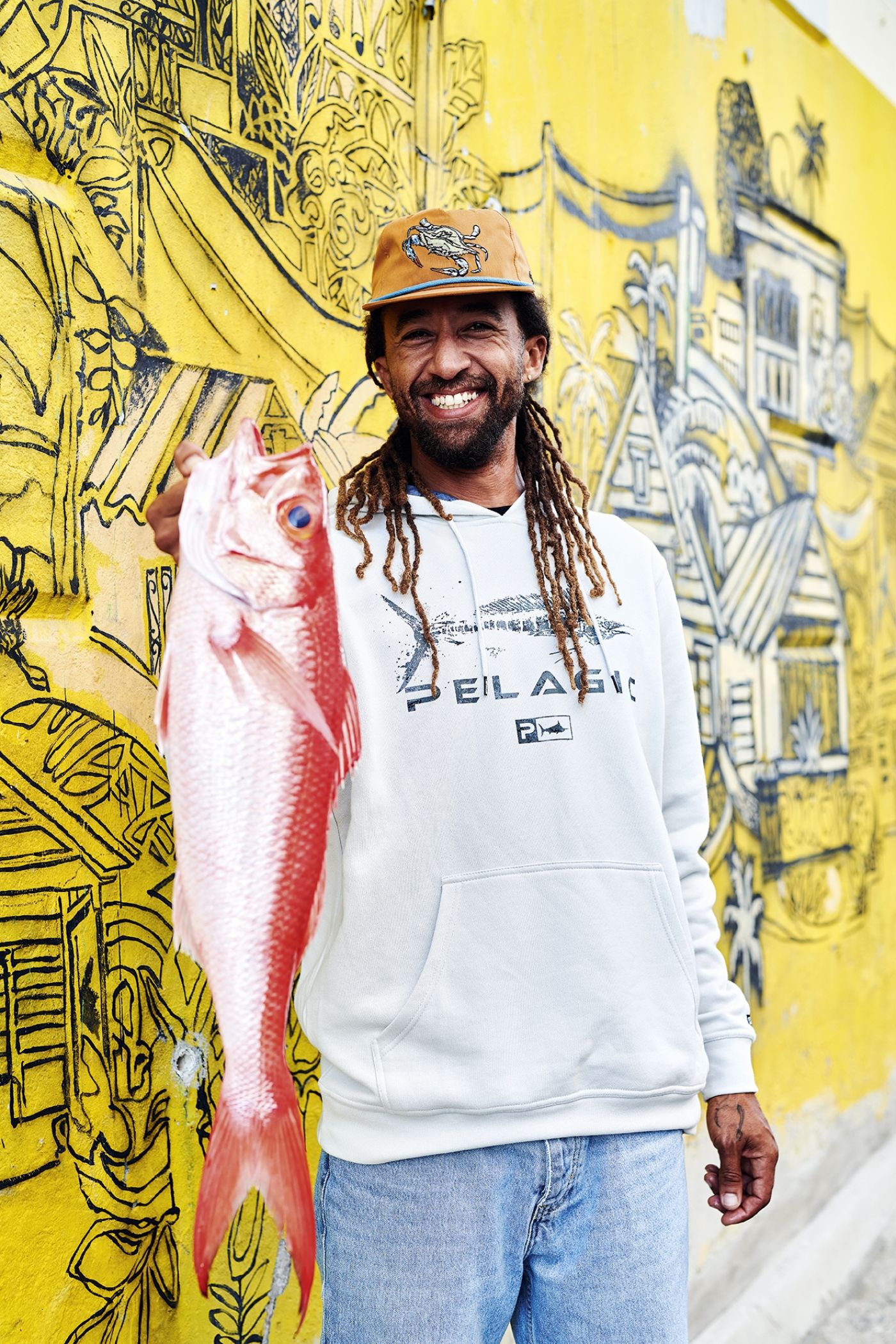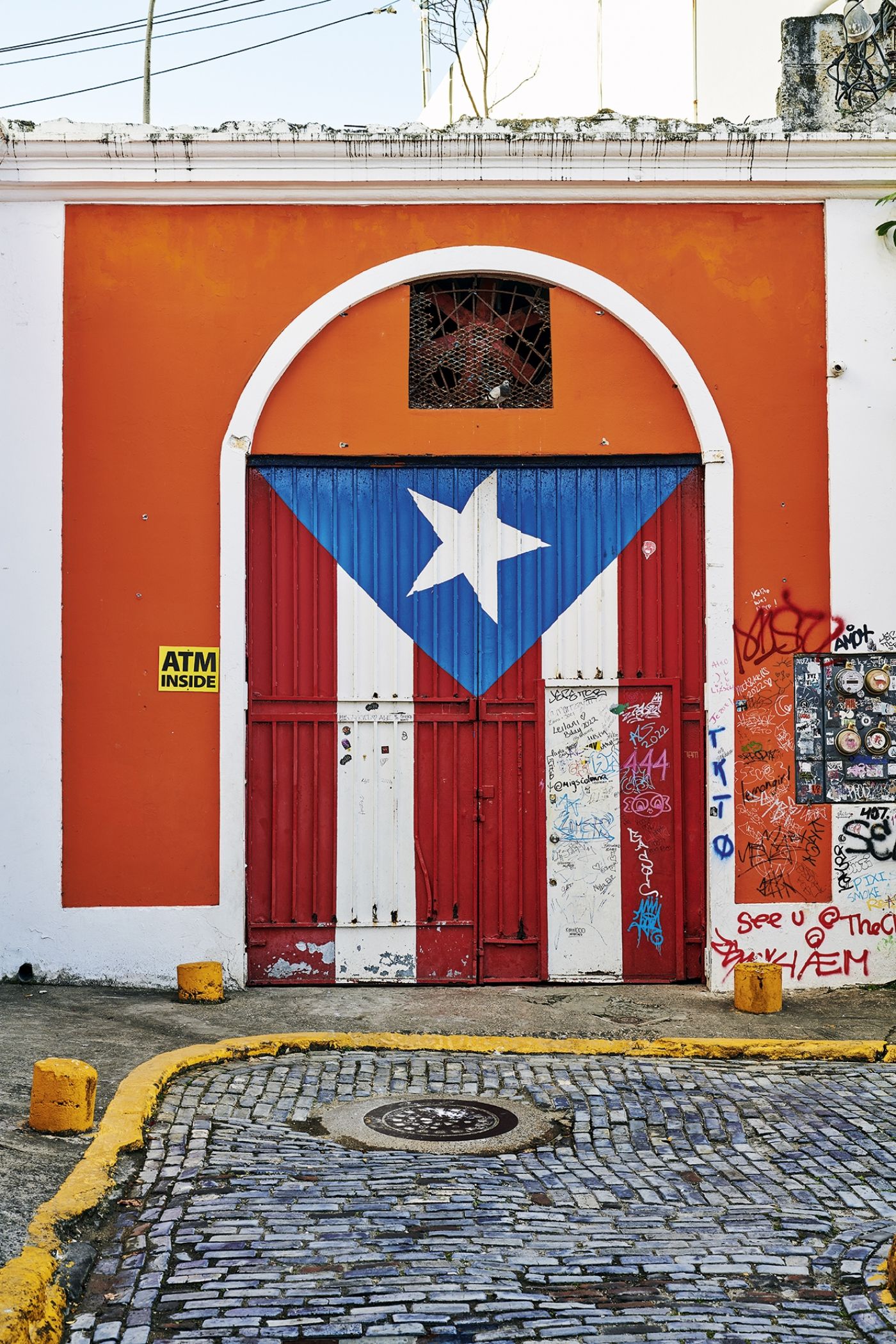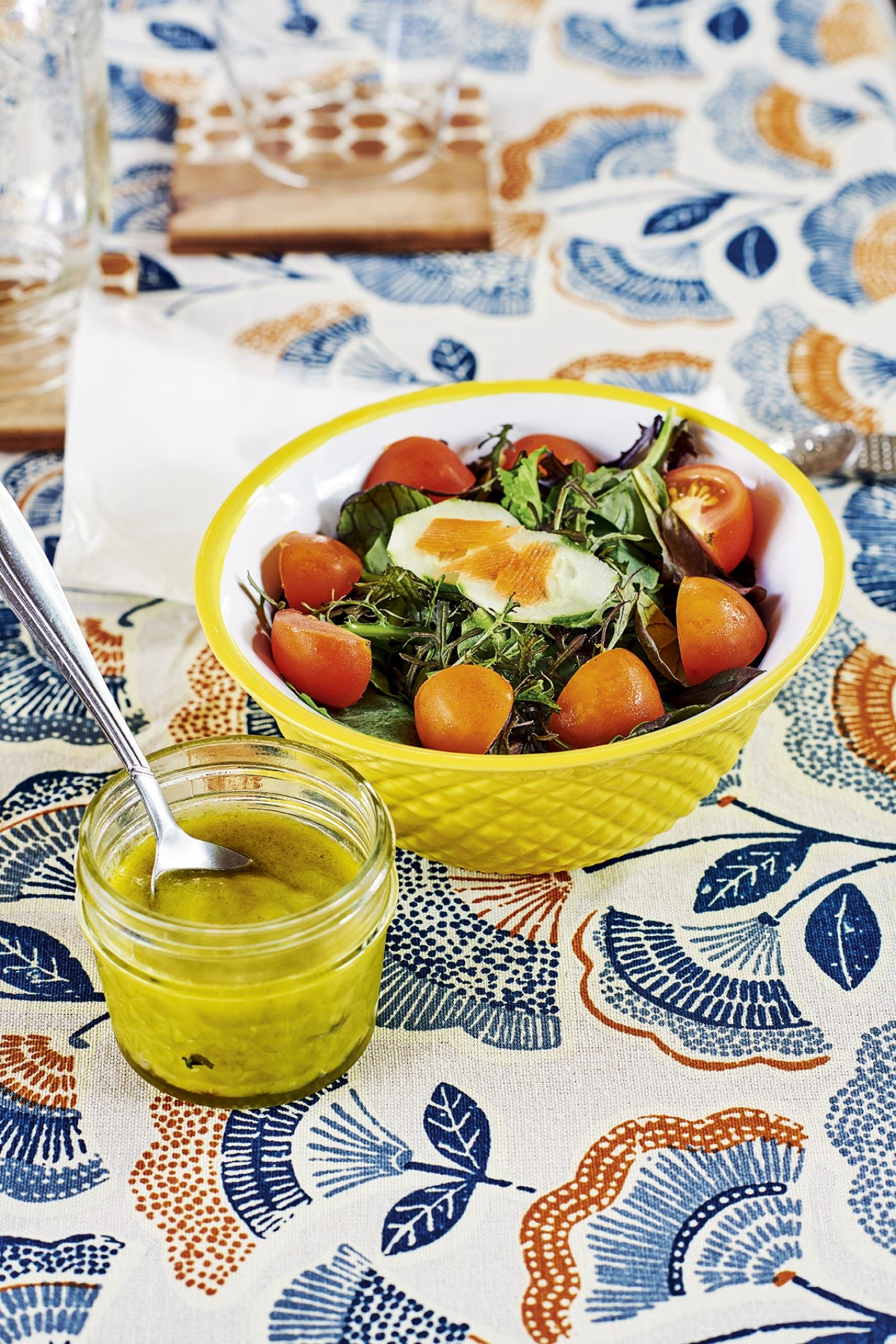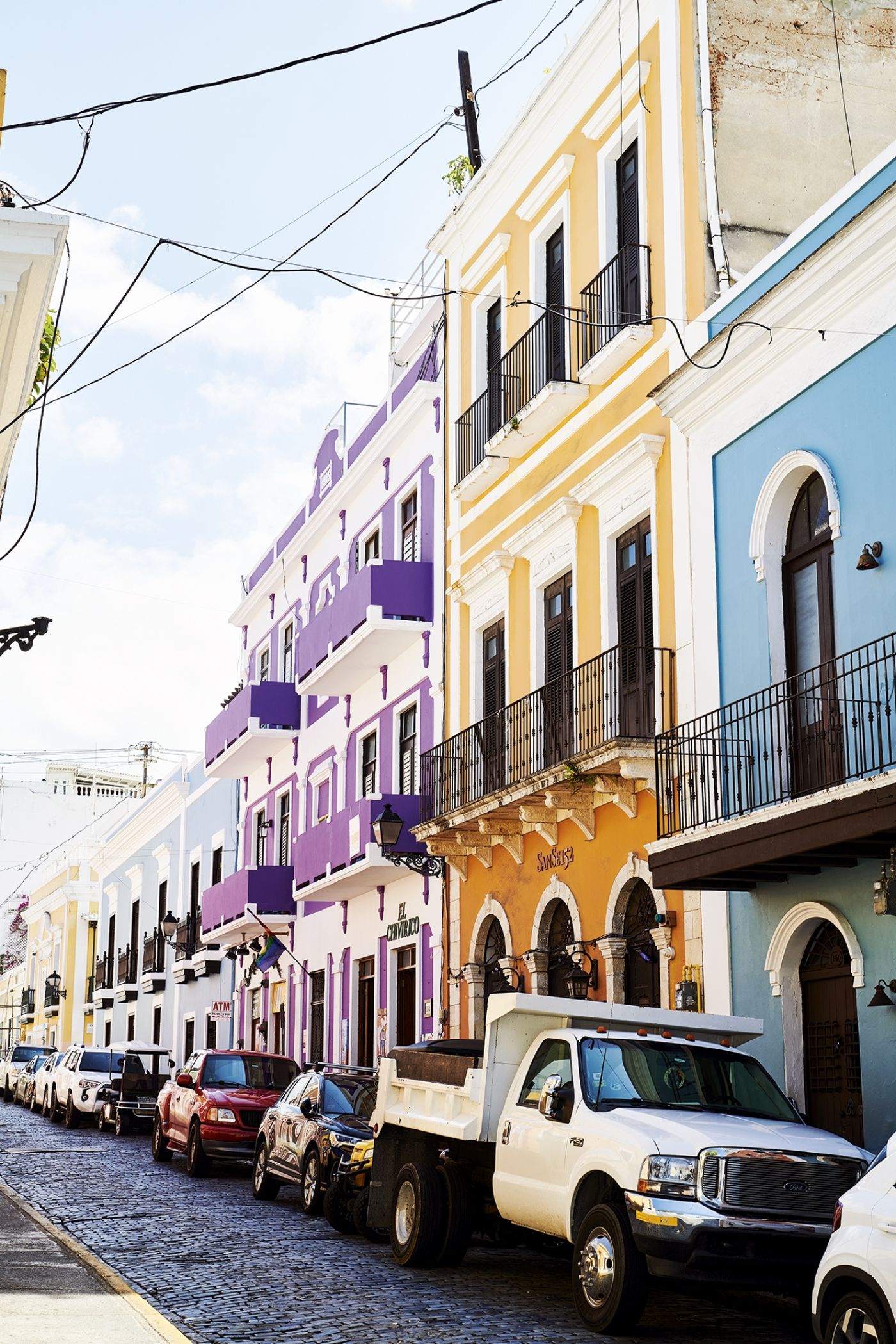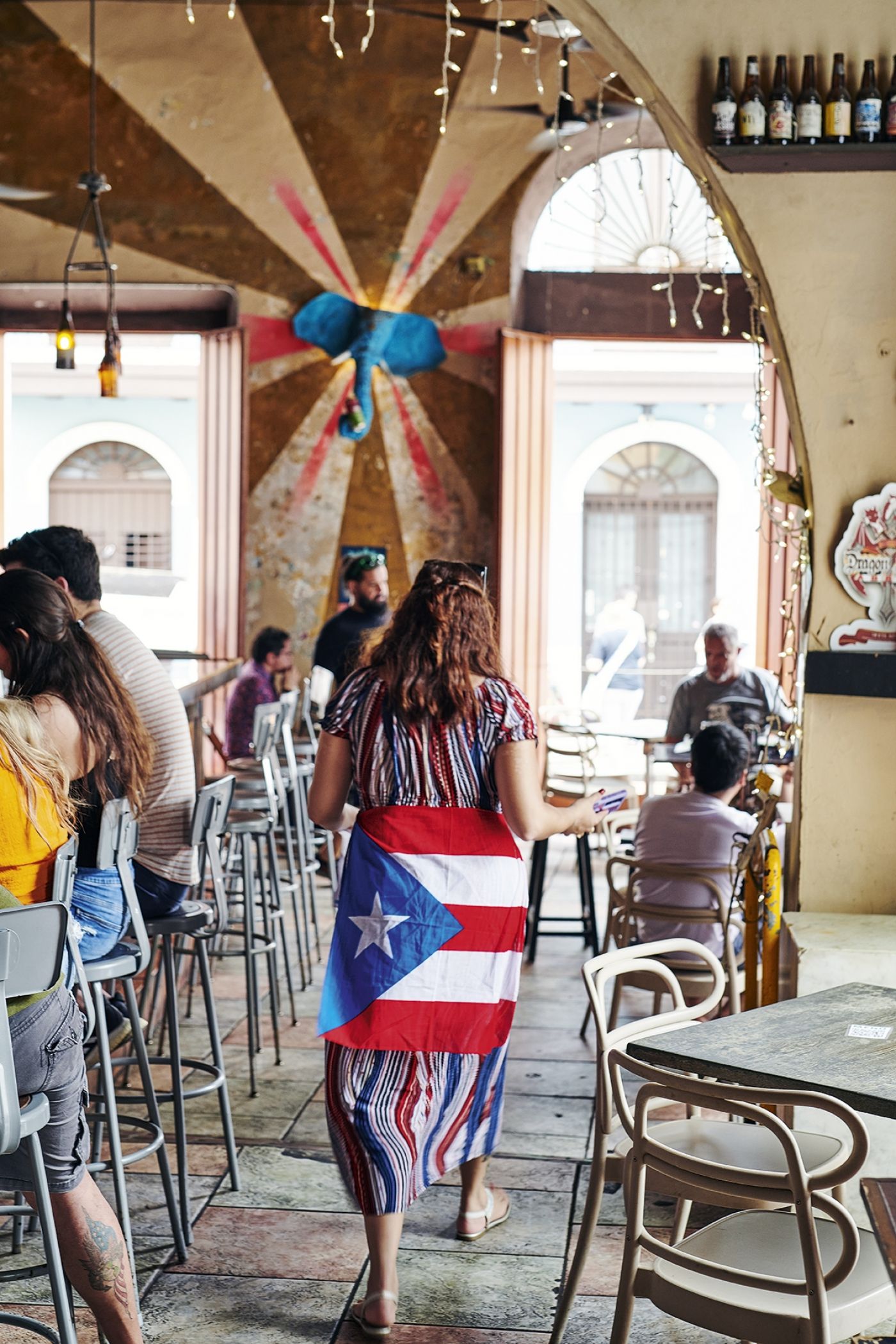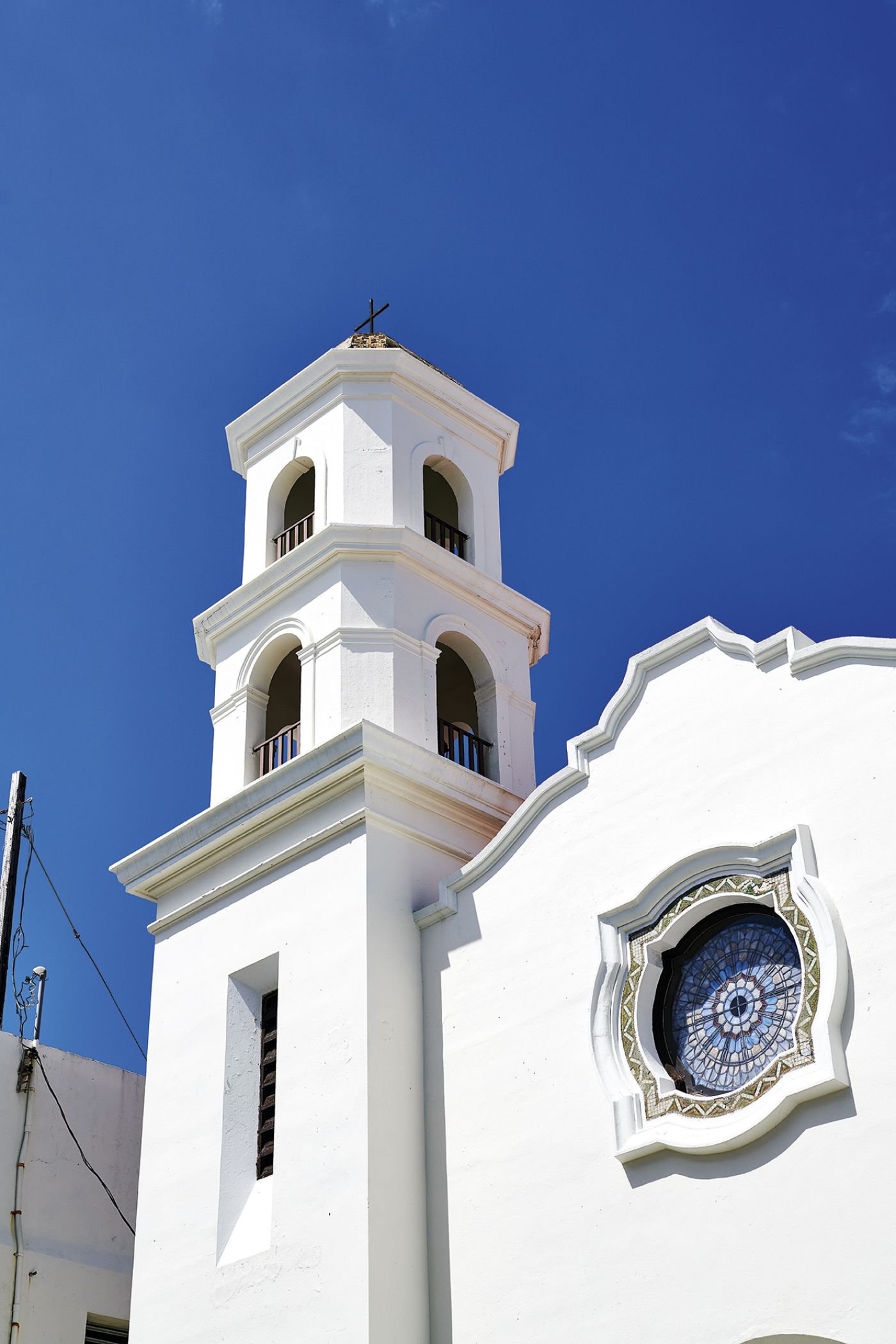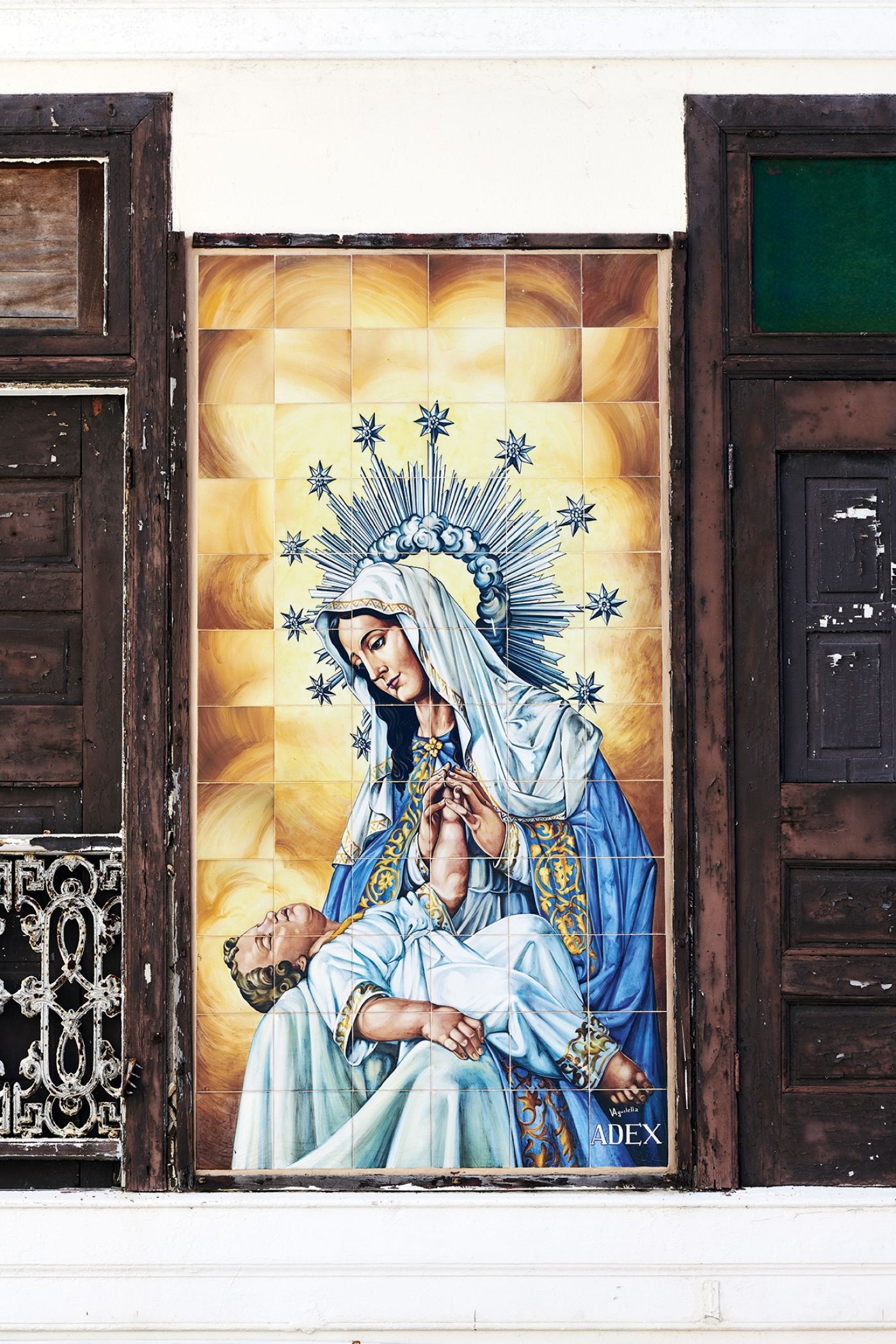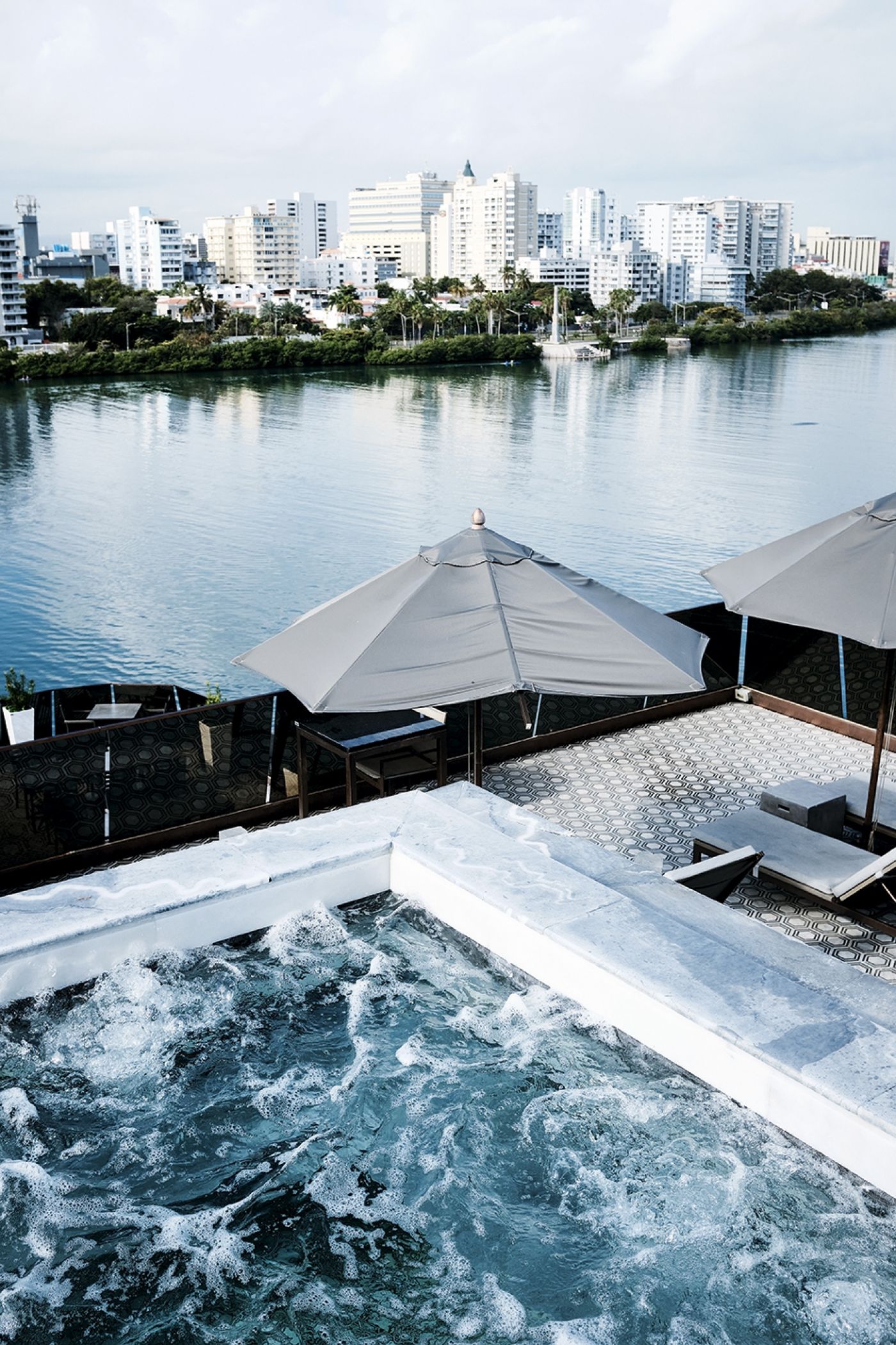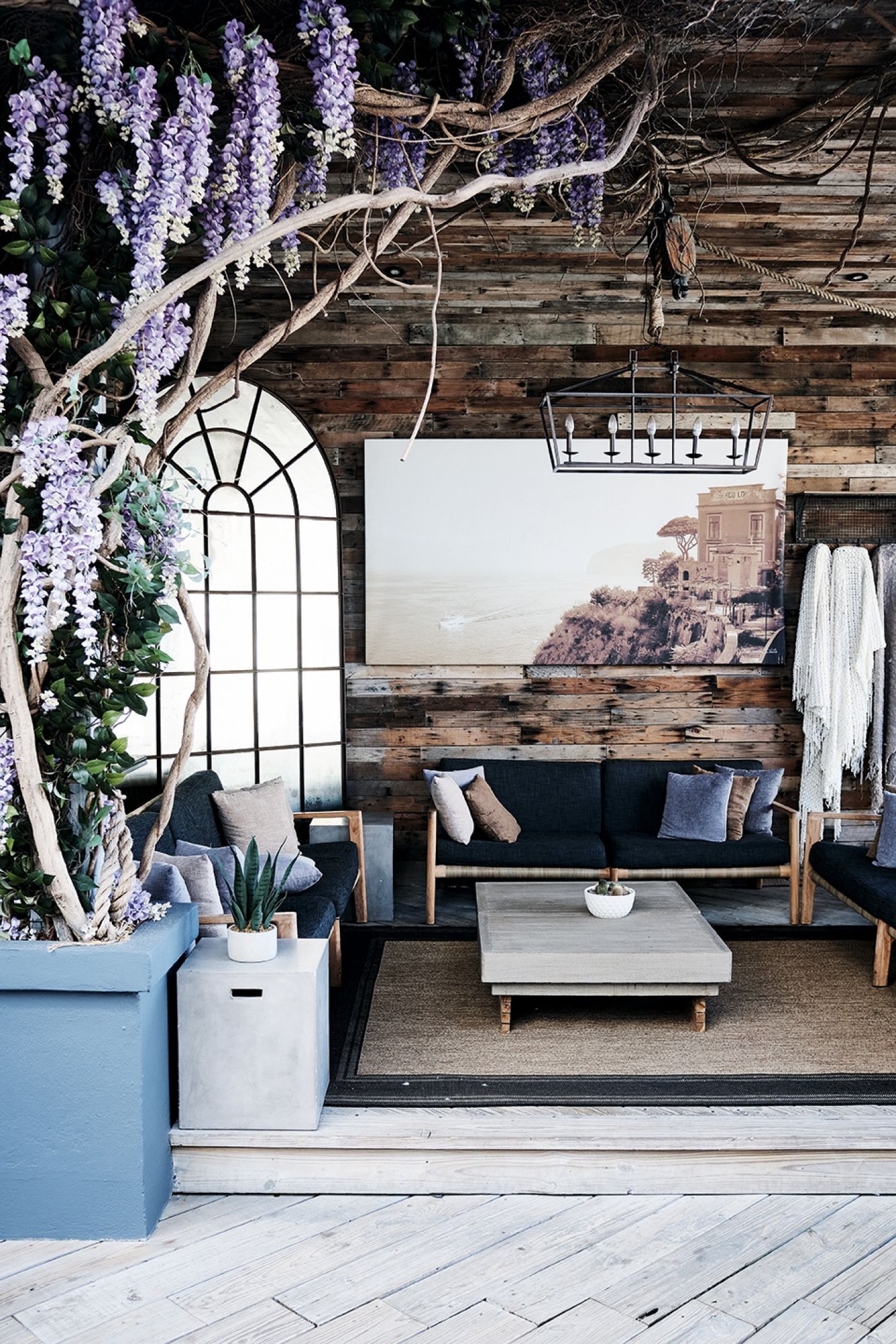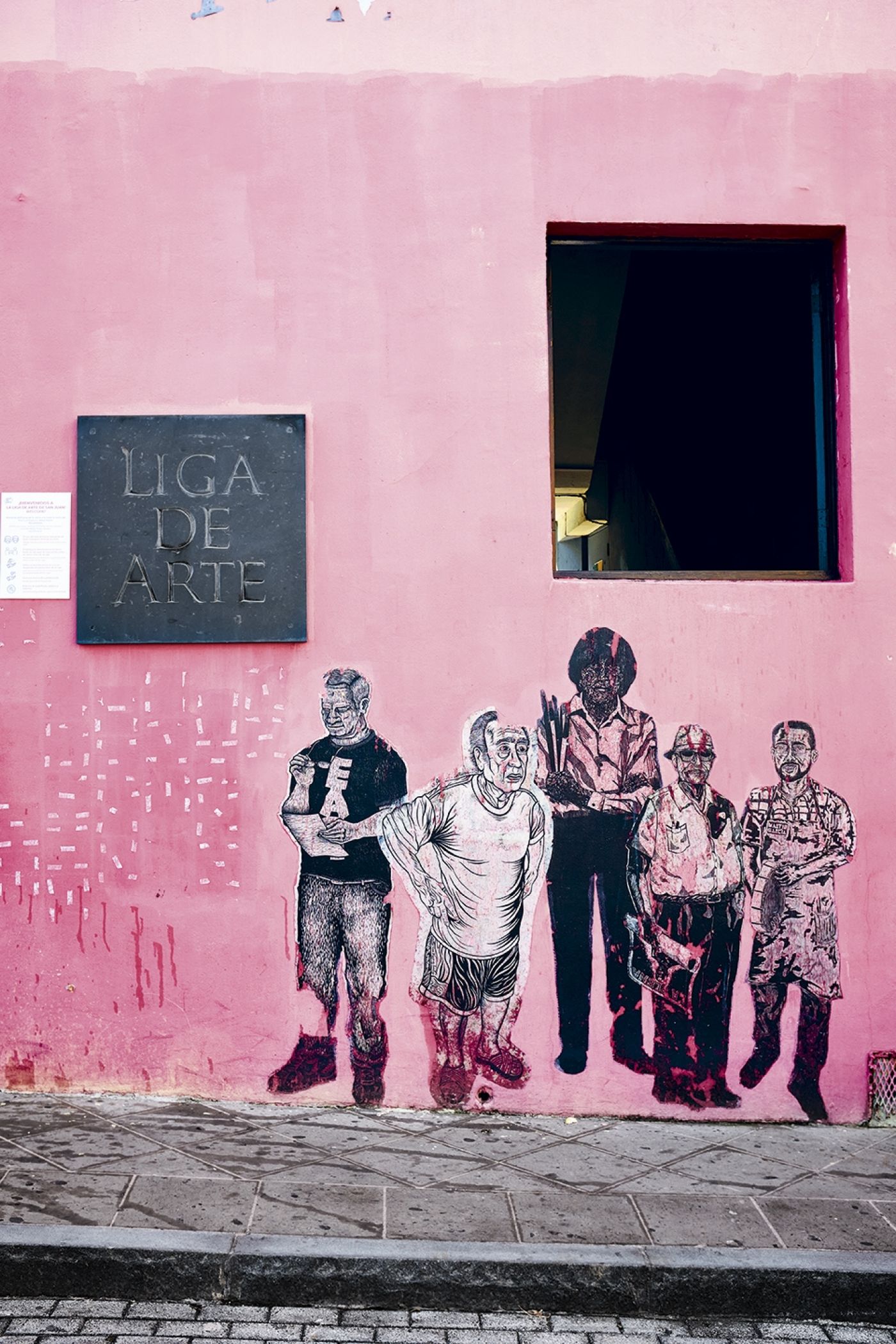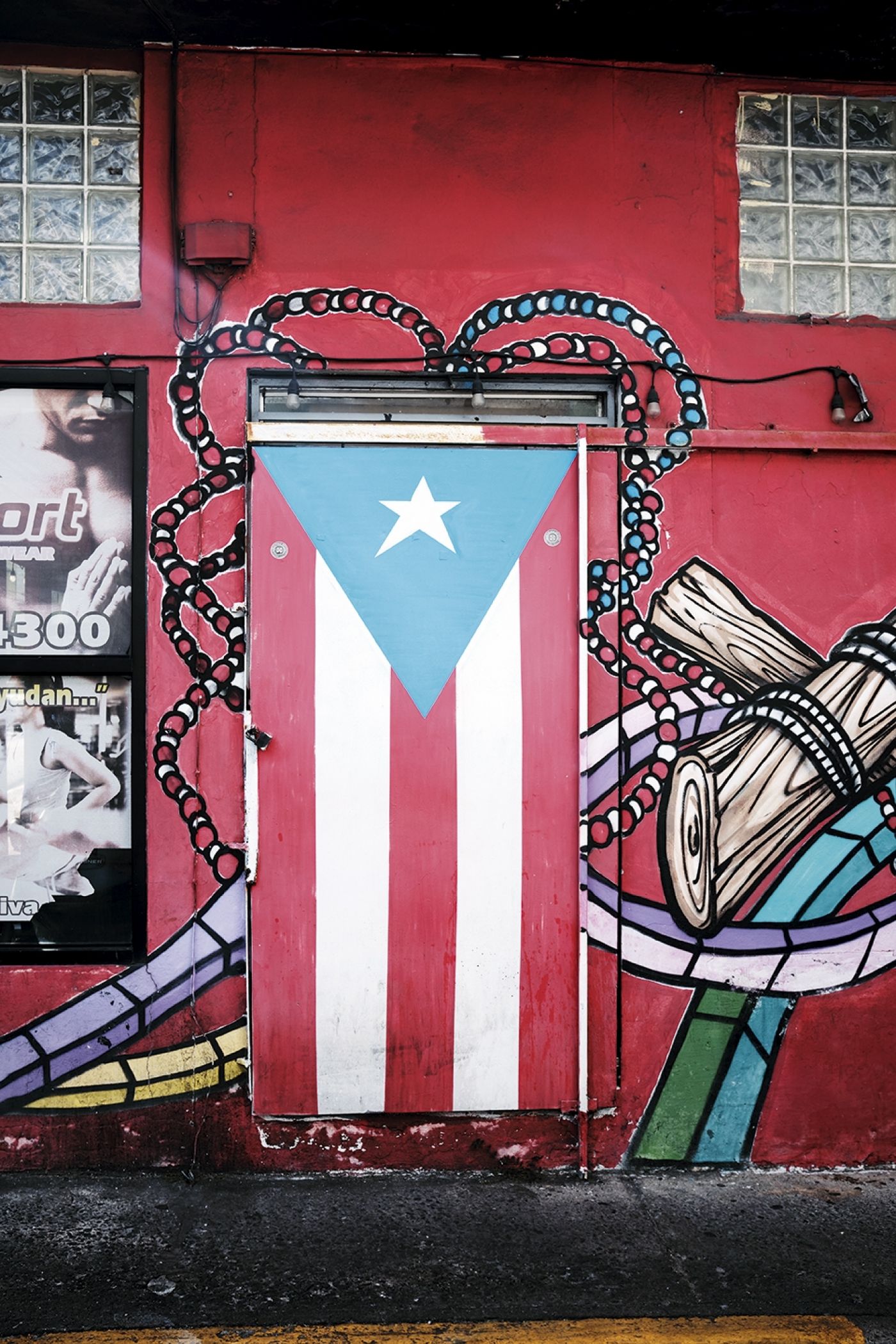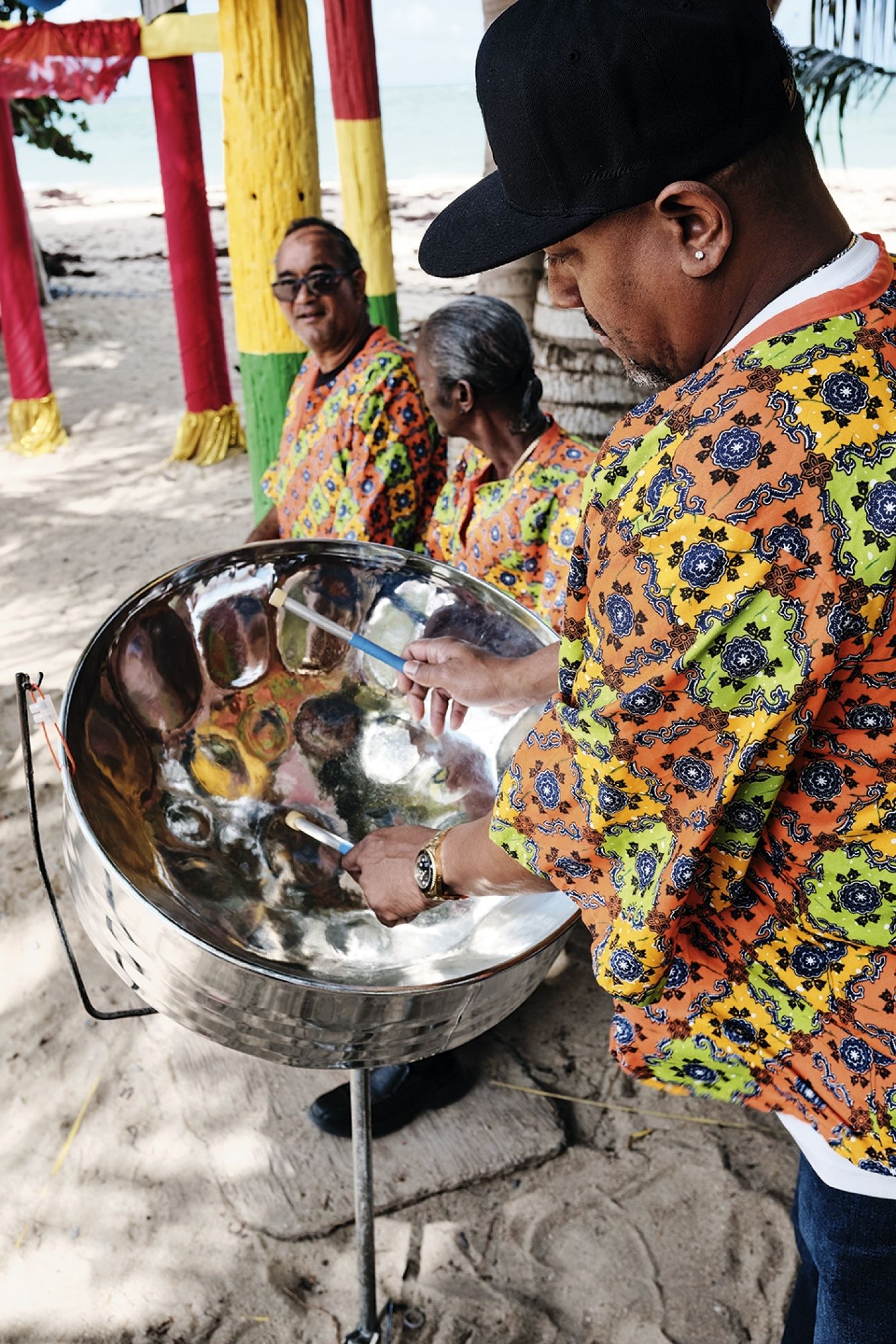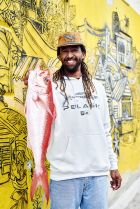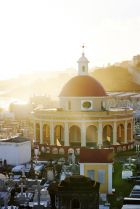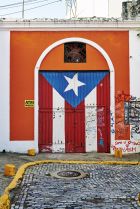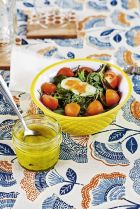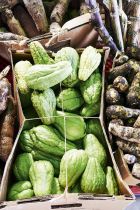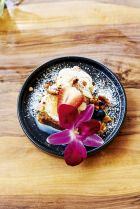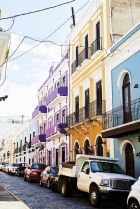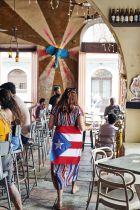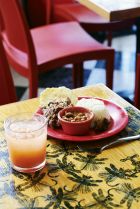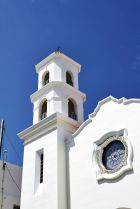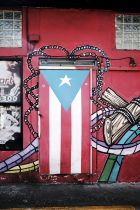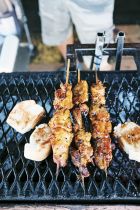
Food and Travel Review
‘Our food is highly seasoned and has a lot of texture. We don’t use hot spices but we include a lot of aromatic herbs such as coriander and oregano, which are very pungent and aggressive – in a good way’
It’s impossible to overestimate the importance of the wind in Puerto Rico. Walk beneath the ramparts of Castillo San Felipe del Morro, the 16th-century fort jutting into the Atlantic in old San Juan, and the gentle breeze skipping off the ocean is welcome natural aircon for daytime temperatures that don’t dip below 25C, even in the middle of winter.
But this breeze is the same trade wind that blew Christopher Columbus over in 1493, ushering in over 400 years of Spanish rule and the imposition of European ingredients on to an indigenous diet based on fish and tropical fruit. An equally devastating wind hit in 2017, when Hurricane Maria slammed into Puerto Rico at speeds of 155mph. The destruction left behind by the island’s worst natural disaster was a wake-up call to Puerto Ricans that they could no longer rely on the 80 per cent of food imported from mainland USA.
A new chapter is opening in Puerto Rican food history, though, one which is being written by the farmers and fishermen supplying chefs who have a hunger for sustainable local ingredients, and islanders hungry to eat them. ‘When Puerto Ricans talk about our food heritage, we mean our history,’ says Pablo Garcia Smith, a guide with Spoon tour company in the capital, San Juan. Today, that fusion of Spanish and Caribbean cuisine, combining elements from the cooking traditions of the slaves the Spanish brought over from Africa and informed by over a century of life as a US territory, has created one of the most exciting food scenes in Latin America.
A walk around old San Juan with Spoon is as good a place as any to get one’s bearings, the gastronomic equivalent of an open-top bus tour. Things begin with a breakfast coffee at Don Ruiz in the Ballajá Barracks, built to protect San Juan from the collapsing Spanish empire in the 19th century and now providing protection from the sun under its shady colonnades. Like most Puerto Rican coffee, the medium roast Don Ruiz is so mild those wary of a strong brew won’t need to add sugar. Puerto Rico once supplied a sixth of the world’s coffee; now it imports nine out of ten cups the islanders drink. Don Ruiz beans, though, grow on a plantation overseen by fourth-generation owner Abimael Ruiz in the west of Puerto Rico and are handpicked from a single farm in a single harvest.
Next stop is Deaverdura, which offers a crash course in the key dishes of cocina criolla, the traditional cooking style that blends indigenous Taíno ingredients with Spanish and African influences in dishes such as juicy roast pork with earthy rice and beans, coloured a vibrant orange from achiote and fragrant with coriander. On the side is a fritter of fried plantain to scoop it all up with and, to drink, glasses of rum and soursop juice, the Caribbean fruit that combines the flavours of strawberry, apple, pineapple and banana all at once.
Pudding comes at the end of the tour in the form of dulce de leche ice-cream lollies from Señor Paleta, sticky and sweet, slurped with a view over the turquoise water of San Juan Bay to the rain cloud on the horizon – never hovering too far from the island’s mountainous interior. Old San Juan is an island apart from the rest of the capital, separated from the modern city not only by the bay but also lagoons and channels. A comparison with Venice is inevitable: the pastel-hued streetscapes, where no two neighbouring houses are permitted to be painted the same colour, form the bestpreserved colonial city centre in Latin America. And, like Venice, people are leaving in their thousands: the population of old San Juan has dropped by 30 per cent to 7,000 residents since the turn of the century, as many traditional homes, gathered around a central courtyard like a Moroccan riad, are converted to Airbnbs.
Arguably, the real San Juan food story is happening elsewhere, over the bridges and away from the old town in hip nightlife districts such as Condado and Miramar, where the best chefs in Puerto Rico are redefining their culinary heritage with modern techniques applied to homegrown ingredients.
Like many of the most celebrated chefs in San Juan, Juan José Cuevas left home to work in mainland USA and overseas (in his case, New York City and San Sebastián) before realising his dream of opening a restaurant in Puerto Rico, at the Condado Vanderbilt Hotel, San Juan’s answer to Claridge’s or The Carlyle. Growing up in the Seventies and Eighties, he remembers the only vegetables as being frozen. ‘The new generation of farmers still grow the plantain and cassava,’ he says, ‘but they also grow three or four different types of beets and tomatoes. They have diversified.’ How would he describe Puerto Rican cooking? ‘Very tasty,’ he says. ‘Like, really tasty. Our food is highly seasoned and has a lot of texture. We don’t use hot spices, but we include a lot of aromatic herbs such as coriander and oregano, which are very pungent and aggressive, in a good way.’
Juan José interprets that on his menu as what he calls a more ‘delicate’ version of Puerto Rican cooking, not least by using citrus to marinate or finish dishes such as tuna and scallop crudo. He uses vegetables too: local aubergine with spicy tomato vinaigrette, squid, octopus, clams and coriander, say. Although there’s a Puerto Rican flavour profile to each dish, his ultimate aim is to highlight ingredients grown on the island. ‘The most important thing for me is to put the name of Puerto Rico on the food map. I think what chefs and farmers are doing now is amazing.’
Juan José buys his much of his fresh produce from Frutos del Guacabo, founded 13 years ago by Efren Robles and his wife Anjali half an hour west of San Juan, down a lane thick with the vegetation that, left unchecked, grows over everything on this lush island. ‘I listen to what chefs need,’ says Efren, and he is clearly attentive Juan José has been a customer for 11 years and the farm now supplies 200 restaurants and hotels in Puerto Rico.
Efren gives what he calls ‘sensuous tours’ to the public, offering the smells and tastes of the farm: savoury oregano, mouth-puckeringly peppery watercress, hot and juicy nasturtium flowers. Passion fruit grows in the sun against a chain-link fence, with fuchsia-pink amaranth next to the yellow and blue flowers of butterfly peas, pretty as an iris, while a greenhouse now produces hydroponic micro-leaves after chefs complained about having to import them from California.
With cocks crowing and goats bleating, cute bunnies for kids to pet, Frutos del Guacabo looks and sounds like an earthly paradise, but it hasn’t always been this way: it took 177 days for the farm to get back on track after Hurricane Maria. ‘The farm was totally destroyed,’ says Efren. ‘We could write a book about resilience.’
'Passion fruit grows in the sun against a chain-link fence, with fuschia-pink amaranth next to yellow and blue flowers of butterfly peas, pretty as an iris, while a greenhouse produces hydroponic micro-leaves for chefs'
The visit ends with plates of finger food prepared by his son Adrian, ‘the chef of the family,’ his dad says proudly. There are green banana cups filled with pigeon peas, an escabeche of vinegar and olive oil and pickled chayote squash with pickled red onions, a sweet-and-sour combination that Efren says is typical of Puerto Rico. To drink it, we squeeze lime juice into a glass of butterfly pea flower tea and the liquid turns purple, like a bottle of ink. ‘It’s cool if you’re in a bar and you see it change colour,’ he smiles. ‘We want people to be closer to food.’
It’s not just farmers who are bringing chefs and diners closer to their food. Anthony Elizo used to work in the music industry and began learning fishing skills from the day boats he saw every day from his beachfront house. He became a social media sensation for the videos he posted from his tiny kayak, bringing big fish like yellowfin tuna back to dry land balanced on his knees. Anthony’s is a determinedly low-tech approach to fishing that has sustainability at its heart. ‘I always try to offer restaurants the fish of the season,’ he explains. ‘There are lots of species people don’t know about, but chefs can promote them by putting them on the menu. It is my responsibility to the community to be sustainable, so people who consume seafood know what to ask for. My goal is to educate Puerto Ricans that we are surrounded by water and we need to take care of our natural resources.’
Gordon Ramsay was one of the people who took notice of Anthony’s videos and accompanied him on a fishing trip for his National Geographic show Uncharted. Puerto Rican chefs were also paying attention. One of the venues he’s had an impact on is Celeste, a relative newcomer on the San Juan dining scene that feels like the kind of hip hangout you’d find in Shoreditch, Brooklyn or East Berlin.
We wouldn’t be able to do what we do without Anthony,’ says owner Sebastián Martínez Tully, and pride of place on the menu goes to Anthony’s fish: mahi mahi, queen snapper and the house speciality of red mullet aged for five days so that each bite tastes intensely different. Nothing is left to waste; any leftover scraps are mixed with American cheese and turned into a puff-pastry Jamaican fish patty.
Sebastián and his chef brother Diego returned to San Juan after working in the US with the intention of opening a Puerto Rican restaurant that reflected their own food experiences. They chose the name Celeste since it is easy to say in both English and Spanish, while the sky-blue of the restaurant’s logo reflects the colour of the version of the Puerto Rican flag associated with the independence movement.
‘There’s an element of nostalgia in what we’re doing here,’ Sebastián says. ‘We want to represent our memories of how we remember things growing up, and to relive them.’ Nostalgic it may be, but Celeste feels like the future for Puerto Rican cooking: traditional ingredients lightened up with bright, fresh flavours that let the quality of produce do the talking.
It is this willingness to re-interpret traditional Puerto Rican cuisine that marks out the best chefs working in San Juan today. Mario Pagán is the owner of Mario Pagán Restaurant and Sage Steak Loft in San Juan and the Puerto Rican representative for the chefs from all US states who form the Diplomatic Culinary Partnership programme attached to the Department of State.
‘I believe we have to elevate Puerto Rican cuisine,’ Mario tells me at his elegant self-titled restaurant. ‘Everybody makes rice and beans, so how do you refine that? That’s what people go to restaurants for – they want to see something new. That has been my mojo for 20 years and now the young chefs are starting to catch up. Each chef needs to interpret their upbringing.’
For his part, Mario makes the staple Puerto Rican dish of arroz con pollo – rice and chicken – Spanish-style with socarrat, the crispy rice found in Valencian paella. ‘Why?’ Mario asks. ‘Because one of our influences is Spanish. As well as African, which is why there’s a lot of frying and preserving ingredients.’ There’s Asian, too: the Spanish introduced spices such as star anise, sesame seeds and lemongrass from the Philippines. ‘All those influences play a part in what I like to do,’ Mario says, ‘which is to internationalise Puerto Rican cuisine.’
And yet one doesn’t have to travel far to find Puerto Rican food as many Puerto Ricans eat it. A bridge painted in the pan-African colours of yellow, green and red in the east of San Juan crosses from the Tiffany-blue waters of the exclusive Isla Verde resort district into what feels like a different world. Instead of luxury hotels lining the road, there are kiosks billowing smoke from crates, left behind by cruise ships, being burnt. This is Piñones, one of the poorest districts in Puerto Rico, where African slaves came to hide out after escaping from the plantations and today home to the largest Black population on the island. It is also, arguably, where one will find the best – or most authentic – Puerto Rican food.
The Spanish chef José Andrés, whose World Central Kitchen served 3.5 million meals after Hurricane Maria, thinks so: he brought talk-show host Jimmy Kimmel to Piñones to demonstrate what he called ‘the essence’ of Puerto Rican cuisine: frituras, the fritters that come in as many shapes as there are different fillings. The pair tried alcapurrias fritters and rum sours from El Rinconcito Latino, where patriotic Puerto Rican music plays on the stereo, chicken for the tacos comes from the birds flapping around the mangrove trees on the other side of the sandy road and the beach beckons behind. Come on a weekday and you’ll be sharing the place only with kids in corn rows and hoodies, but weekends are bumper-to-bumper with locals looking for a lunch spot.
You don’t have to just eat at El Rinconcito Latino, though. Part of the fun of Piñones is to graze between food kiosks: morcilla blood sausage with garlic and hot sauce from El Abuelo, shrimp and octopus pastelillos pasties from Iguana, and plastic pint glasses of mojitos made with whatever tropical fruit takes your fancy.
Like everywhere on the island, a meal in Piñones, no matter how casual, begins with a wish of buen provecho, the equivalent of bon appétit, which literally translates as ‘good advantage’ or ‘good profit’. Now, at last, it’s true to say it’s the Puerto Ricans themselves who are profiting from their island’s abundance of natural advantages.
Words by Ben McCormack. Photography by Peter Cassidy.
Travel courtesy of Discover Puerto Rico. discoverpuertorico.com
Where to stay
Casa Sol Bed and Breakfast An 18th-century colonial building with five bedrooms in old San Juan restored by owner Eddie Ramirez, who returned to the street he was born on after a 40-year career working in hospitality in New York and New Jersey. Sustainability is a focus for Eddie and his wife Margarita: doors made from salvaged wood, water from the 270-year-old cistern beneath the house, and everything powered by solar panels. Threecourse breakfasts are served in the courtyard – ‘If it’s not from Puerto Rico, it won’t be on your plate,’ Eddie promises. Doubles from £198 including breakfast. 316 Calle Sol, San Juan, 00 1 787 980 9700, casasolbnb.com
Condado Vanderbilt Hotel Formerly owned by railroad magnate Frederick William Vanderbilt, this seafront hotel opened in 1919 and its Jazz Age good looks are the work of Warren and Wetmore, the designers of Grand Central Station in New York, which gives a clue as to the grand dimensions of the public spaces. Includes a spa, four swimming pools and eight drinking and dining options, including chef Juan José Cuevas’ destination restaurant 1919. Doubles from £282. 1055 Ashford Ave,
00 1 787 721 5500, condadovanderbilt.com
El Pretexto An hour’s drive south of San Juan in Cayey, this charming guesthouse is run by hands-on owner Crystal Diaz, who describes her labour-of-love as ‘Puerto Rico’s first culinary farm lodge’. Much of what Crystal cooks is produced on the land between the property’s three villas, with breakfasts and evening pop-ups from local chefs held on a wooden deck against a backdrop of mountains and the Caribbean Sea on the horizon. The perfect spot to relax, swinging in a hammock, after a day’s hiking. Doubles from £223 (two-night min). Road 715, Cayey, elpretextopr.com
O:LV Fifty Five Glamorous and glitzy, this adults-only boutique hotel is on the strip of land between the beach and the tidal Condado Lagoon, which many rooms overlook: expect to see a colony of manatees from your balcony in the morning. Rooftop bar and restaurant Arya serves alfresco breakfasts with a view of the water by day and cocktails by night, and ground-floor dining room Raya is overseen by local chef Mario Pagán. Spacious guest rooms with deep baths and powerful massage showers offer respite from the party atmosphere. Those looking for a calmer vibe may prefer sister hotel O:live around the corner. Doubles from £241. 55 Calle Barranquitas, San Juan, 00 1 787 705 8421, olvhotel.com
Trópica Beach Hotel If you’re not planning on spending too much time inyour hotel, this simply furnished property is a good-value base in San Juan. Get a restful night’s sleep in one of the small but light bedrooms before the two-minute walk to the mile-long sandy beach, fringed by palm trees and street-food stands. The vibrant nightlife of Condado is an easy taxi ride away, while brunch in the hotel’s Dulcesalado is a scene in itself. Doubles from £163. 1853 McLeary Ave, 00 1 787 728 8119, tropicapr.com
Travel Information
Surrounded by the Atlantic to the north and the Caribbean Sea to the south, the unincorporated US territory of Puerto Rico and its vibrant capital city San Juan combine American familiarity with a Latin vibe. Time is four hours behind GMT and currency is the US Dollar. Flights to San Juan’s Luis Muñoz Marin Airport, with a change on the US mainland, take around 15 hours.
GETTING THERE
British Airways fly from London Heathrow to Miami and Philadelphia, with
connections to San Juan provided by American Airlines. britishairways.com
American Airlines offers flights from London Heathrow to San Juan via
Charlotte. americanairlines.co.uk
GETTING AROUND
Uber is the easiest way to get around San Juan while Bespoke Lifestyle Management offers tours further afield, including Piñones, Loíza, the Pork Highway, coffee plantations and El Yunque rainforest. bespokeconcierge.com
RESOURCES
Discover Puerto Rico, the tourism board, is your official guide, full of inspiration and info to help plan your trip. discoverpuertorico.com
Where to eat
Prices given are an average per person for a three-course meal, excluding any drinks, unless otherwise stated
1919 Named after the year the Condado Vanderbilt Hotel opened, 1919 is overseen by chef Juan José Cuevas, whose fine-dining technique is applied to local ingredients such as goats’ cheese and swordfish, with monthly wine dinners. The interiors could be any luxury hotel (there’s a dress code of no shorts or sandals), but views straight over the Atlantic give a powerful sense of place. Four-course tasting menu £160pp. 1055 Ashford Avenue, San Juan, 00 1 787 721 5500, condadovanderbilt.com
Celeste Expect fish plucked out of Puerto Rican waters by Gordon Ramsay approved Anthony Elizo, cooked by Diego Martínez Tully and served by his brother Sebastián. Aged fish is a speciality – tuna with Meyer lemon, or red mullet with kombu and anchovy gel, with wine pairings from lesser-known producers. Rough-around-the-edges interiors lend a cool cachet enhanced by modern art. £96. 100 Calle Pelayo, San Juan, 00 1 787 403 4323
Chocobar Cortés Puerto Rico’s century-old chocolate brand has a café in Old San Juan that is a tourist attraction in itself. Chocolate is incorporated into almost every dish, from a chocolate and cheese toastie to serrano ham and dark chocolate croquettes and, of course, excellent drinks. £35. 210 Calle de San Francisco, San Juan, 00 1 787 722 0499, chocobarcortes.com
Epicuro Culinary Center Most chef’s tables have a team behind the counter but at this relative newcomer it’s just Antonio Pérez creating, assembling and explaining accomplished dishes like halibut with black rice, baby clams and vanilla bouillabaisse to the 12 diners seated at a horseshoe bar around an open kitchen. Perez’s Dutch wife Sara pours an exceptional selection of European and US wines as well as a fabulous Puerto Rican chocolate liqueur. Five-course tasting menu £97pp. 316 Avenida José de Diego, San Juan, 00 1 939 337 0700, epicuroculinarycenter.com
Lechonera Los Pinos The mountains above Cayey, halfway between San Juan and the south coast, are home to a stretch of 30 or so restaurants known as the Pork Highway. At this one, expect assorted chunks of whole roasted pig cooked over charcoal, from spicy Puerto Rican blood sausage and ribs to pork skin as crisp as treacle toffee. Weekends are best avoided, when San Juan arrives en masse for Sunday lunch. Mains from £6.80. Carr 184 km 27.7 Bo Guavate, Cayey, 00 1 787 286 1917, lospinosguavate.com
Mario Pagán Restaurant Local celebrity chef Mario gives native ingredients a European accent in dishes such as spiny lobster thermidor with shallot escabeche and yuca mofongo, while the likes of Brussels sprouts with smoked beets, queso blanco cheese and pine nuts offer a touch of fresh greenery if you’re suffering from fried food overkill. £80. 1110 Ave Magdalena, San Juan, 00 1 787 522 6444, mariopaganrest.com
Oriundo This dining room hidden within Cocina Abierta restaurant functions as a more experimental showcase for chef Martín Louzao. Six courses are themed around a single Puerto Rican ingredient such as the gajilete tomato, which might appear in a tartare of yellowfin tuna, a bolognese sauce with squid or cured with koji and turned into soup. Five-course tasting menu £80. 58 Calle Caribe, San Juan, 00 1 787 946 1333, oriundopr.com/pages/reservations
Rafi’s Slightly more formal than other kiosks in Piñones, Rafi’s has a menu and table service. Expect the fried classics of cocina criolla: crab alcapurrias and carne frita (fried pork), with three types of plantain (mofongo, fried or sweet), and rum and coconut water to wash it down. No-frills dining at its finest. £30pp for a variety of dishes. 187 Carretera Piñones, Loíza, 00 1 787 253 0002
Food Glossary
- Alcapurrias
- Cigar-shaped fitters made from a masa, or batter, of green bananas, green plantain and yautia, a starchy tuber. Crab and lobster are classic stuffings before it hits the deep fryer
- Arroz con gandules
- Puerto Rico’s national dish combines red peppers, green olives and gandules, the beans also known as pigeon peas, seasoned with sazón spice blend and combined with rice before being tossed in the island’s most emblematic sauce, sofrito. Look out too for arroz con pollo, a chicken variation, which involves a similar layering of slow-cooked ingredients to extract maximum flavour
- Bacalaitos
- Another fried delicacy – this one is a fritter of flour and milk, spiced with sofrito and cumin, and coating a filling of shredded salt cod. Made to be dipped in hot sauce and washed down with cold beer, often alongside alcapurrias
- Lechon asado
- Spit-roast suckling pig, liberally seasoned with salt, pepper, oregano, garlic and aijes dulces (small, sweet, cooking peppers) and cooked over a charcoal fire so the skin crisps up like bonfire toffee
- and cooked over a charcoal fire so the skin crisps up like bonfire toffee
- Mofongo
- A dome of mashed fried plantains, garlic and olive oil, usually served as a side dish to pork or chicken, and sometimes paired with chicharrones (fried pork skin): the soft base of the mofongo is a great contrast to the crunch of the meat
- Morcilla
- More similar to the soft Spanish blood sausage than British black pudding, with oats swapped out for rice
- Pan de Mallorca
- Brought over to Puerto Rico by immigrant bakers from the Balearics, this sweet bread is made with flour, sugar, egg yolks and butter and dusted with powdered sugar. Try it stuffed with ham for a sweet-and-savoury accompaniment to a breakfast cup of Puerto Rican coffee
- Pastelillos
- A bit like pasties or empanadas that can be filled with pretty much anything, although prawns and octopus are favourite options
- Plantain
- Introduced to the Caribbean by the Spanish to feed African slaves, this fruit, treated like a vegetable, can be harvested straight from the ground after a storm. Ripe plantain is cut into chunks and fried as the sweet side dish of amarillo or cut into thin layers and baked with beef mince, almost like a lasagne. Sliced green plantain is fried, flattened and fried again, then stuffed with pork, prawn or chicken
- Quesito
- Flaky pastry stuffed with cheese or, for something sweet, guava, dulce de leche or salted caramel, then deep-fried so it’s both crunchy and gooey
- Sofrito
- The base for most Puerto Rican stews and soups, this is a blend of culantro (Puerto Rican coriander, slightly different from cilantro), onion, garlic, oregano, parsley, achiote paste and sazón
Get Premium access to all the latest content online
Subscribe and view full print editions online... Subscribe

